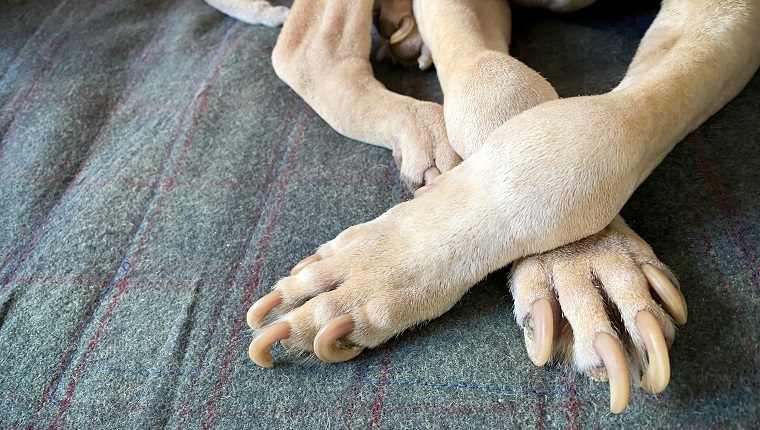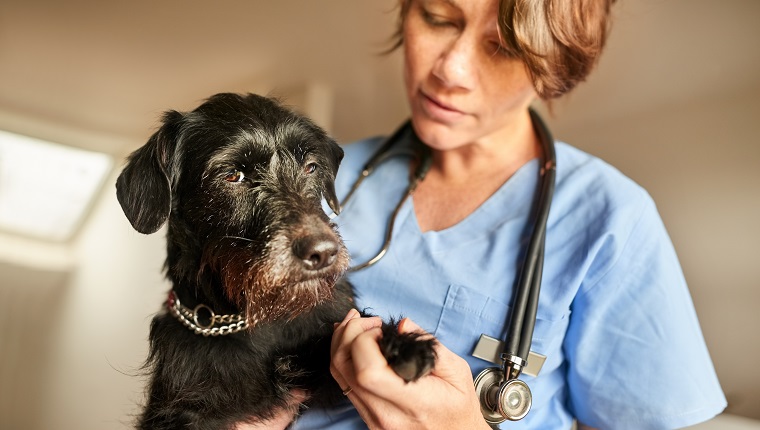Nail disorders in dogs, sometimes called dystrophy, can refer to a number of medical issues that affect a dog’s claws and the area surrounding them.
These disorders may include fungal infections, bacterial infections, and abnormal growth problems.
If you see signs that your dog is suffering from issues with their nails or areas around the nails, then you must consult your veterinarian for a proper diagnosis and advice. Here’s what you should know about the symptoms, causes, and treatments of nail disorders in dogs.
Symptoms Of Nail Disorders In Dogs
Nail disorders in dogs can produce a wide range of symptoms. Some of the most frequent symptoms include:
- Claws turning red or white
- Issues being able to walk normally
- Tending to lick the paws more than usual
- Nails looking deformed
- Nails splitting
- Swelling around the area
Causes Of Nail Disorders In Dogs

The cause of nail disorders in dogs can be any of a number of issues. Some of the most frequent causes include:
- Bacterial infection
- Fungal infection
- Parasites
- Suffering trauma
- Congenital issues
- Inappropriate nail cutting
- Hormone-related issues
Some of the specific disorders that might be diagnosed include paronychia (which involves inflammation), onychomadesis (which might cause discoloration), and macronychia (which results in larger-than-usual nails).
Treatments For Nail Disorders In Dogs
If you suspect that your dog is suffering from a nail disorder, then your veterinarian will want to examine your dog’s nails and the surrounding area. If only one specific nail is being affected, there is a chance that a trauma might be behind the ailment.
In other cases where dogs have more than one affected nail, there might be an underlying medical condition that needs treatment. In general, skin scrapings can help your veterinarian figure out the cause of a the disorder.
When it comes to treatment, the precise course will depend on the underlying condition. In some cases, vets might suggest a surgical removal of part of the nail. In other cases, vets may recommend the use of topical antibiotic treatments.
Generally, you can help lessen the chances of your dog developing nail issues by practicing good nail maintenance. Your vet can help show you how to safely and effectively keep your dog’s nails in top condition.
Has your dog ever developed a nail disorder? What was the cause of the issue? Tell us all about it in the comments below.









